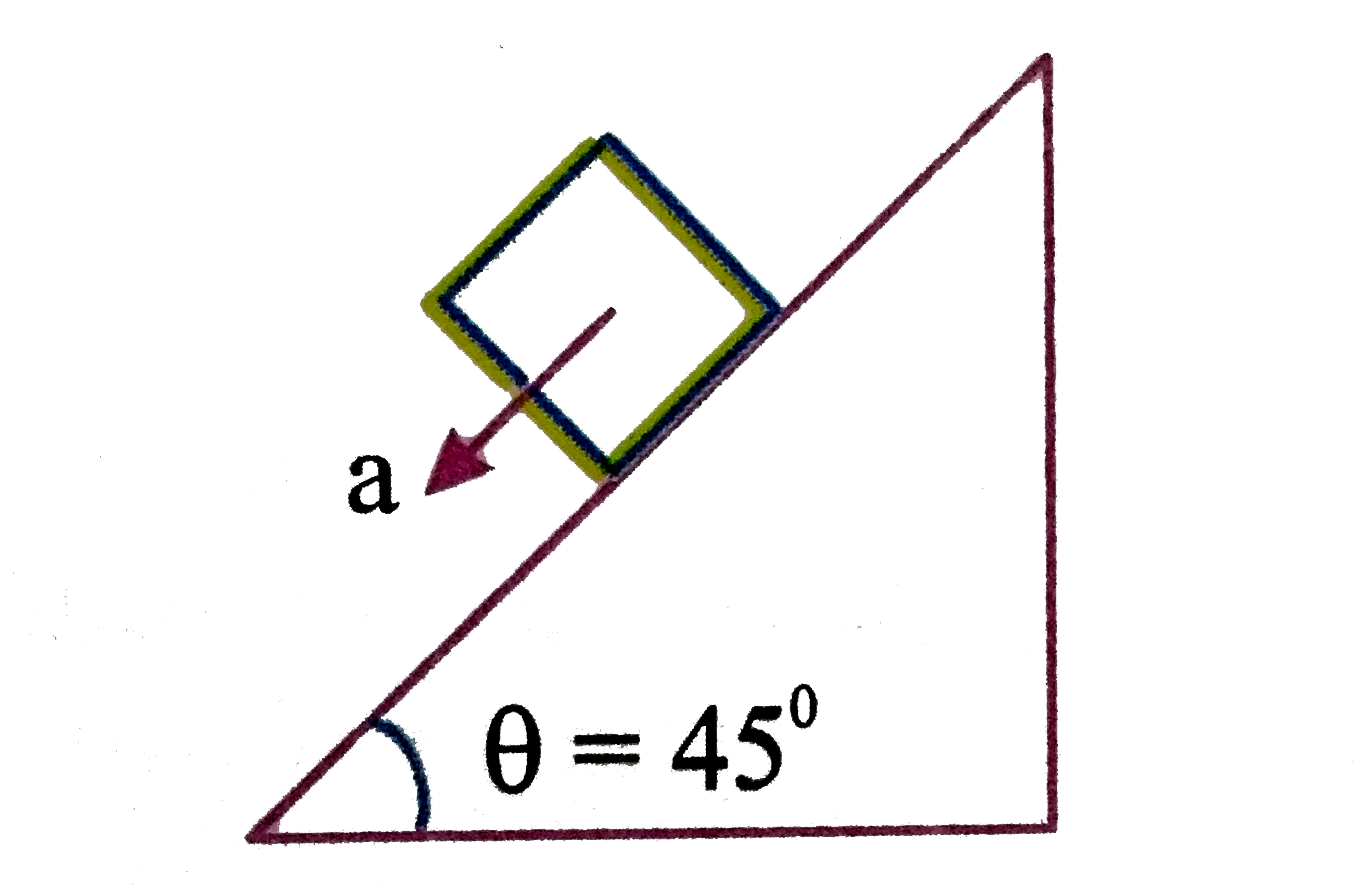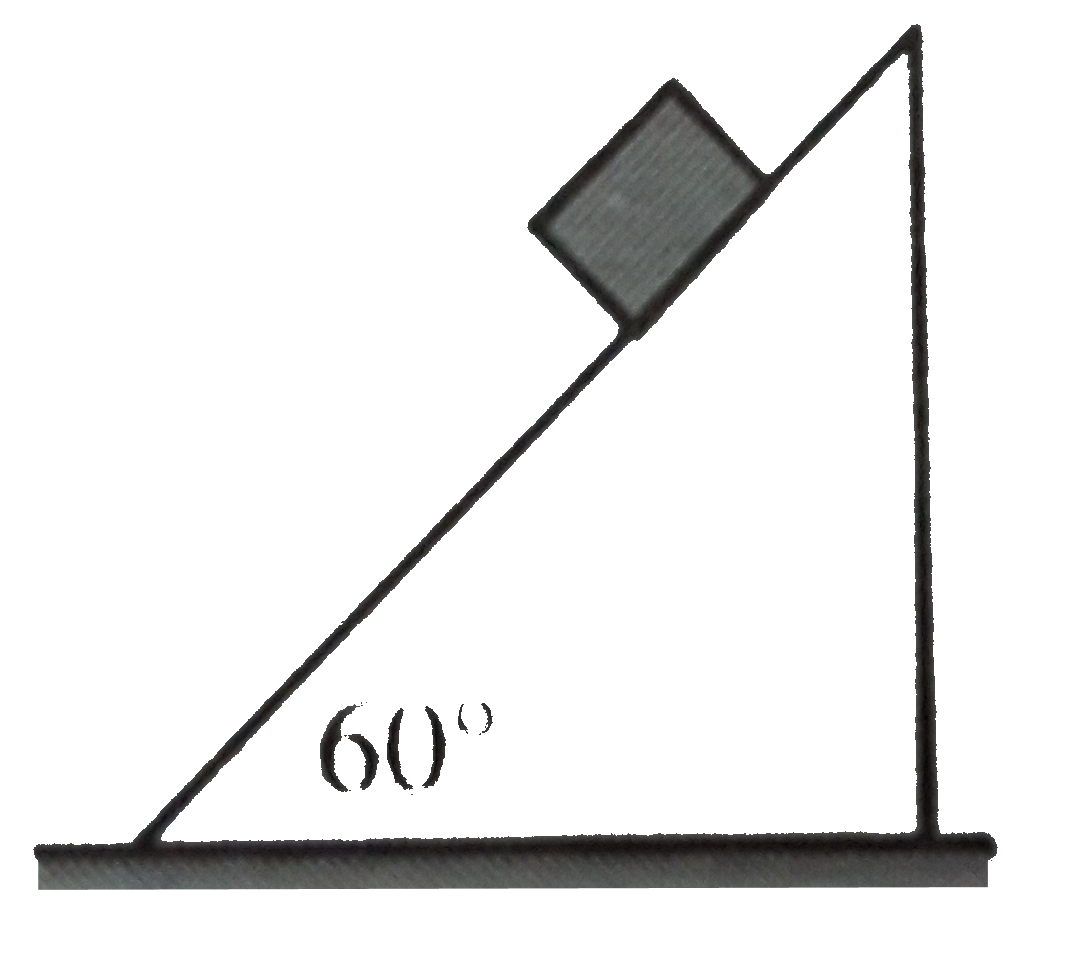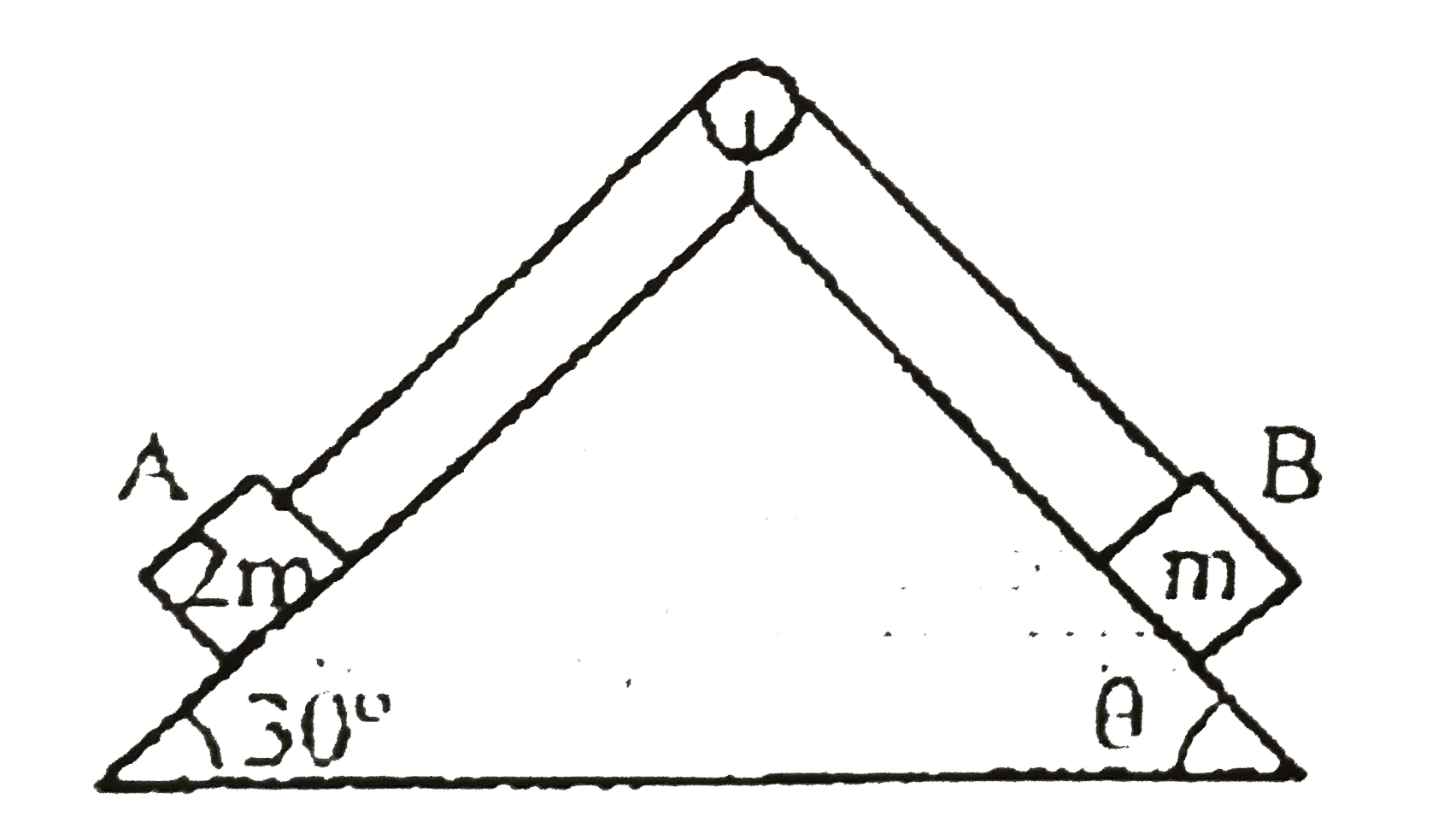A body is sliding down an inclined plane having coefficient of friction 1/3. If the normal reaction is three times that of the resultant downward force along the incline, the angle between the inclined plane and the horizontal is
tan−1(12)
tan−1(2)
tan−1(23)
tan−1(32)
The correct Answer is:C
To solve the problem step by step, we will analyze the forces acting on the body sliding down the inclined plane and use the given information to find the angle between the inclined plane and the horizontal.
Step 1: Identify the forces acting on the body
The forces acting on the body include:
- The weight of the body (mg), acting vertically downwards.
- The normal force (N), acting perpendicular to the inclined plane.
- The frictional force (f), acting opposite to the direction of motion, which can be calculated using the coefficient of friction (μ).
Step 2: Break down the weight into components
The weight can be resolved into two components:
- The component parallel to the incline: mgsinθ
- The component perpendicular to the incline: mgcosθ
Step 3: Write the expression for the normal force
The normal force (N) is equal to the perpendicular component of the weight:
N=mgcosθ
Step 4: Write the expression for the frictional force
The frictional force (f) can be expressed as:
f=μN=μ(mgcosθ)
Given that μ=13:
f=13(mgcosθ)
Step 5: Write the expression for the net downward force along the incline
The net downward force (F_net) along the incline is given by:
Fnet=mgsinθ−f
Substituting the expression for friction:
Fnet=mgsinθ−13(mgcosθ)
Factoring out mg:
Fnet=mg(sinθ−13cosθ)
Step 6: Use the given condition about the normal force
According to the problem, the normal force is three times the resultant downward force along the incline:
N=3Fnet
Substituting the expressions for N and F_net:
mgcosθ=3(mg(sinθ−13cosθ))
Step 7: Simplify the equation
Cancelling mg from both sides (assuming mg≠0):
cosθ=3(sinθ−13cosθ)
Distributing the 3:
cosθ=3sinθ−cosθ
Adding cosθ to both sides:
2cosθ=3sinθ
Step 8: Rearranging to find the relationship between sin and cos
Dividing both sides by cosθ:
2=3tanθ
Thus, we can express tanθ:
tanθ=23
Step 9: Find the angle θ
To find the angle θ, we take the arctangent:
θ=tan−1(23)
Conclusion
The angle θ between the inclined plane and the horizontal can be calculated using a calculator or trigonometric tables.
The forces acting on the body include:
- The weight of the body (mg), acting vertically downwards.
- The normal force (N), acting perpendicular to the inclined plane.
- The frictional force (f), acting opposite to the direction of motion, which can be calculated using the coefficient of friction (μ).
The weight can be resolved into two components:
- The component parallel to the incline: mgsinθ
- The component perpendicular to the incline: mgcosθ
The normal force (N) is equal to the perpendicular component of the weight:
N=mgcosθ
The frictional force (f) can be expressed as:
f=μN=μ(mgcosθ)
Given that μ=13:
f=13(mgcosθ)
The net downward force (F_net) along the incline is given by:
Fnet=mgsinθ−f
Substituting the expression for friction:
Fnet=mgsinθ−13(mgcosθ)
Factoring out mg:
Fnet=mg(sinθ−13cosθ)
According to the problem, the normal force is three times the resultant downward force along the incline:
N=3Fnet
Substituting the expressions for N and F_net:
mgcosθ=3(mg(sinθ−13cosθ))
Cancelling mg from both sides (assuming mg≠0):
cosθ=3(sinθ−13cosθ)
Distributing the 3:
cosθ=3sinθ−cosθ
Adding cosθ to both sides:
2cosθ=3sinθ
Dividing both sides by cosθ:
2=3tanθ
Thus, we can express tanθ:
tanθ=23
To find the angle θ, we take the arctangent:
θ=tan−1(23)
The angle θ between the inclined plane and the horizontal can be calculated using a calculator or trigonometric tables.
Similar Questions
A body is sliding down an inclined plane having coefficient of friction 0.5. If the normal reaction is twice that of the resultant downward force along the inclination the angle between the inclined plane and the horizontal is
View SolutionWhen a body slides down an inclined plane with coefficient of friction as μk, then its acceleration is given by .
View Solution
Knowledge Check
When body slides down from rest along smooth inclined plane making angle of 45∘ with the horizontal, it takes time T When the same body slides down from rest along a rough inclined plane making the same angle and through the same distance it is seen to take time pT, where p is some number greater that 1. Calculate late the coefficient of friction beween the body and the rough plane.
 .A1/PBμ=(1−1/p2)C1/p2D2-p
.A1/PBμ=(1−1/p2)C1/p2D2-p
A body is placed on an inclined plane and has to be pushed down. The angle made by the normal reaction with the vertical will be:-
View SolutionWhen a body of mass M slides down an inclined plane of inclination θ, having coefficient of friction μ through a distance s, the work done against friction is :
View SolutionA block slides down on inclined plane (angle of inclination 60∘ ) with an accelration g/2 Find the coefficient friction

View SolutionThe value of angle such that the acceleration of A is g/6 downwards along the incline plane.

View SolutionA rectangular box lies on a rough inclined surface . The coefficient of friction between the surface and the box is μ. Let the mass of the box be m .
(a) At what angle of inclination θ of the plane to the horizontal will the box just start to slide down the plane ?
(b) What is the force acting on the box down the plane , if the angle of inclination of the plane is increased to α>θ ?
(c) What is the force needed to be applied upwards along the plane to make the box either remain stationary or just move up with uniform speed ?
(d) What is the force needed to be applied upwards along the plane to make the box move up the plane with acceleration a ?
View SolutionA block of mass m slides down an inclined plane of inclination θ with uniform speed. The coefficient of friction between the block and the plane is μ. The contact force between the block and the plane is
View SolutionWhen body slides down from rest along smooth inclined plane making angle of 45∘ with the horizontal, it takes time T When the same body slides down from rest along a rough inclined plane making the same angle and through the same distance it is seen to take time pT, where p is some number greater that 1. Calculate late the coefficient of friction beween the body and the rough plane.
 .
.
View Solution
